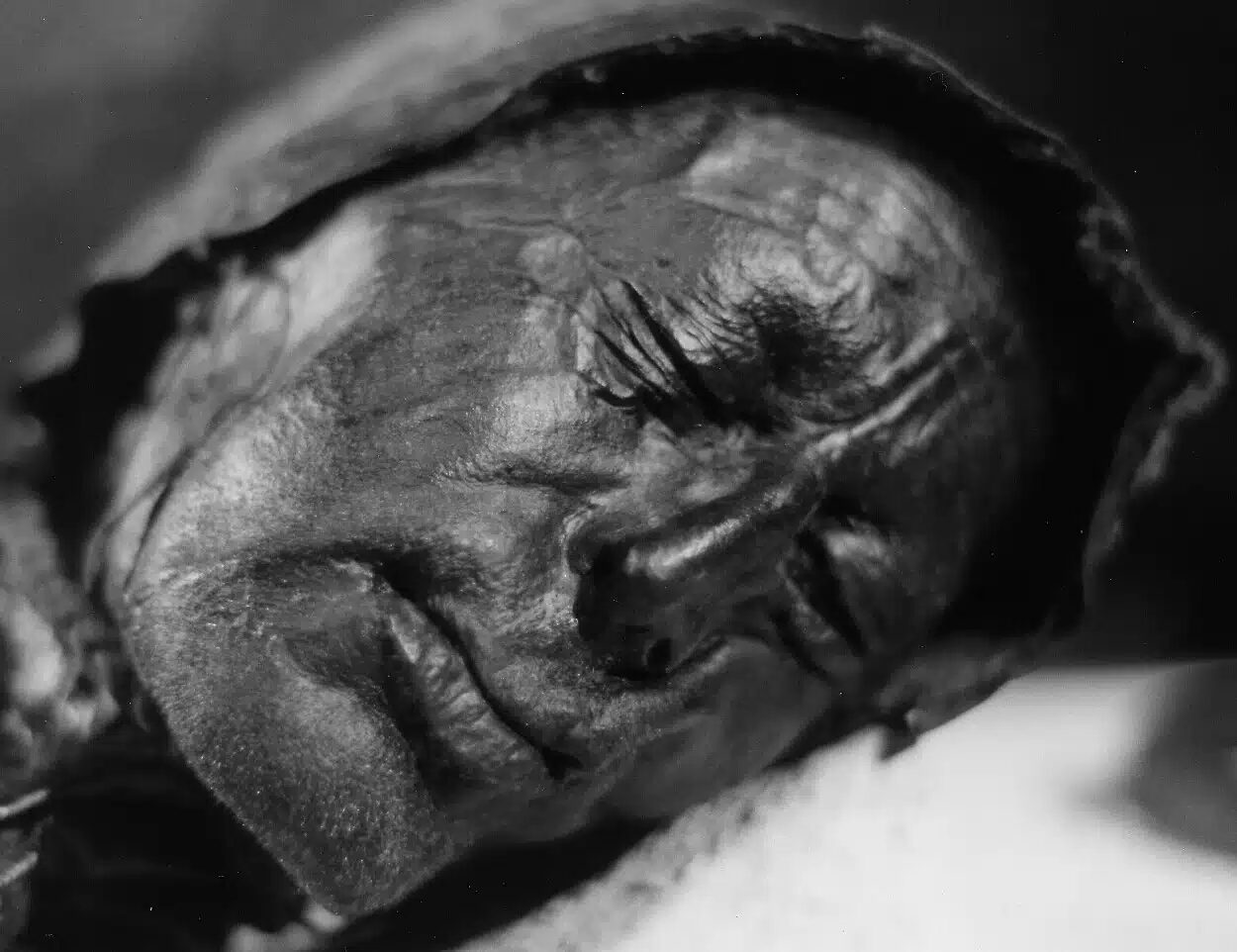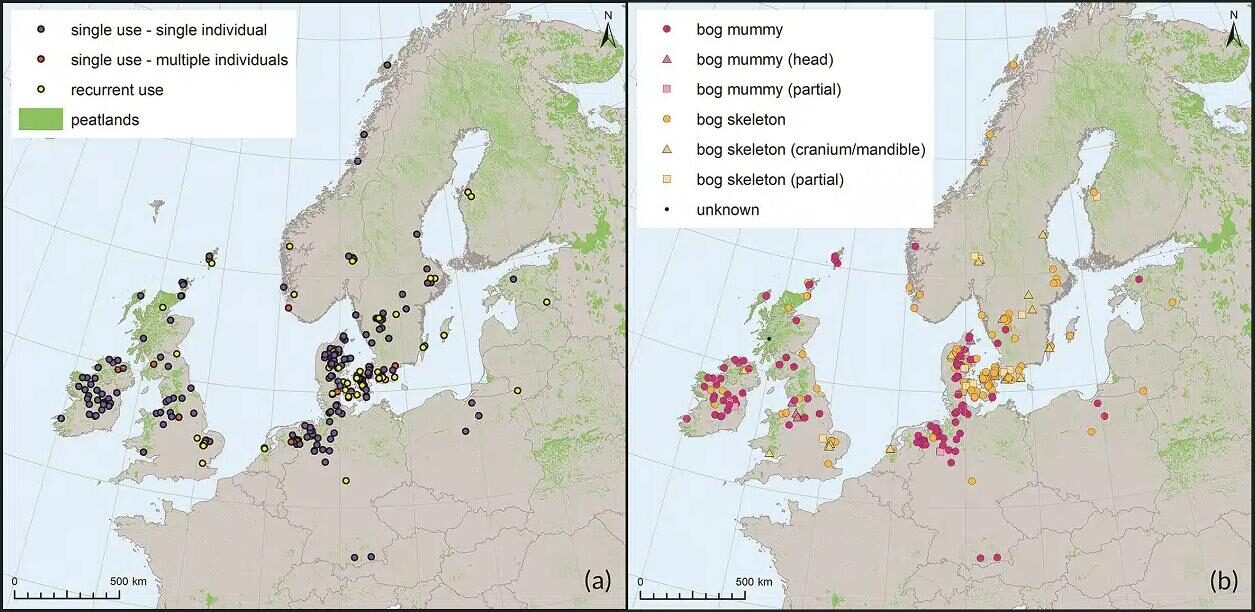A bog body is a human cadaver that has been naturally mummified in a peat bog. Due to the highly acidic water, low temperature, and a lack of oxygen, the bogs preserve materials such as skin, hair, nails, as well as the internal organs.
People were buried in bogs as early as the prehistoric period, with the oldest known bog body being the Koelbjerg Man from Denmark, who has been dated to 8000 BC during the Mesolithic period. Several bog bodies are famous for being extremely well-preserved, such as Lindow Man from the United Kingdom, Tollund Man from Denmark, or Yde Girl from the Netherlands.
Due to the high level of preservation, bog bodies enable scientists to reconstruct aspects of the individual's life in the distant past, such as their last meal from traces preserved in the stomach, or even the cause of death.
Many bog bodies show a number of similarities, such as violent deaths and a lack of clothing, which has led archaeologists to believe that they were killed and deposited in the bogs as a part of a widespread cultural tradition of human sacrifice mainly during the Iron Age.
"Literally thousands of people have met their end in bogs, only to be found again ages later during peat cutting," said Doctor Roy van Beek, from Wageningen University, "The well-preserved examples only tell a small part of this far larger story."
An international team of Dutch, Swedish, and Estonian researchers have conducted a study, published in the journal Antiquity, where the team analysed over 1000 remains from 266 sites across Europe.
The researchers have divided the study cases into three main categories: 'bog mummies' - where the skin, soft tissue and hair is preserved, 'bog skeletons' - with only the bones surviving, and the third category being the partial remains of either bog mummies or skeletons.
The study has revealed that the bog body practice is part of a millennia-long, deep-rooted tradition. The phenomenon starts in southern Scandinavia during the Neolithic, around 5000 BC, and gradually spreads over Northern Europe. The youngest finds, known from Ireland, the United Kingdom and Germany, show the tradition continued into the Middle Ages and early modern times.
Where a cause of death could be determined, the majority appear to have met a gruesome end and were likely intentionally left in bogs. This violence is often interpreted as ritualistic sacrifices, executed criminals, or victims of violence. However, in the last few centuries, written sources indicate there were a significant number of accidental deaths in bogs, as well as suicides.
"This shows that we should not look for a single explanation for all finds," said Doctor van Beek, "accidental deaths and suicides may also have been more common in earlier periods."
The study has also found that examples of bog body hotpots can be identified in wetlands where the remains of multiple people have been found. In some cases, these finds reflect a single act such as the mass burial of battle dead.
Other bogs were used time and again, and the human remains were accompanied by a wide range of other objects that are interpreted as ritual offerings, ranging from animal bones to bronze weapons or ornaments.
Such bogs are interpreted as cult places, that must have taken a central place in the belief system of local communities. Another remarkable category is formed by so-called 'war-booty sites', where large quantities of weapons are found alongside human remains.
"All in all, the fascinating new picture that emerges is one of an age-old, diverse and complex phenomenon, that tells multiple stories about major human themes like violence, religion and tragic losses," said Doctor van Beek.
https://doi.org/10.15184/aqy.2022.163





to the bog in time...
[Link]